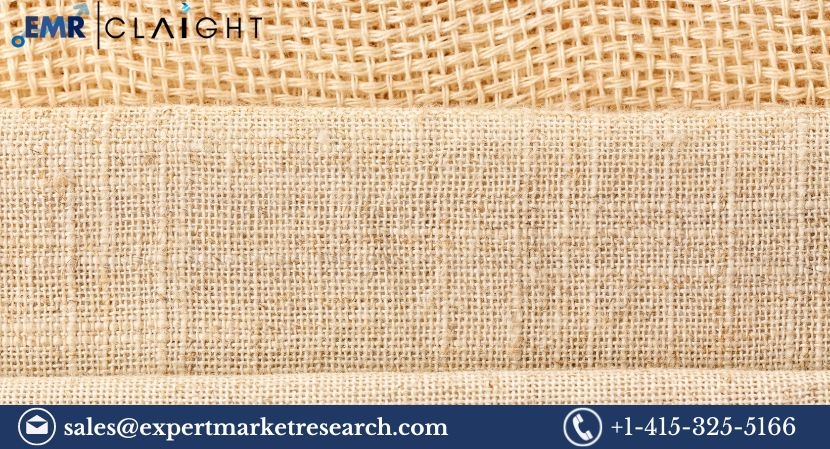The hemp clothing market has been gaining significant traction in recent years, driven by growing consumer demand for sustainable and eco-friendly fashion. In 2023, the market reached a value of approximately USD 3.19 billion and is projected to grow at a robust compound annual growth rate (CAGR) of 26.6% between 2024 and 2032, reaching an estimated USD 26.66 billion by 2032. This blog delves into the hemp clothing market overview, size, trends, growth factors, analysis, forecast, and competitive landscape.
Hemp Clothing Market Overview
Hemp clothing is made from fibres derived from the stalks of the hemp plant, known for its durability, breathability, and eco-friendliness. As consumers become increasingly aware of the environmental impact of traditional textiles, hemp clothing is emerging as a sustainable alternative. Its low water usage, ability to grow without pesticides, and biodegradability make it a preferred choice in the sustainable fashion industry. Hemp clothing includes various products such as shirts, trousers, jackets, and accessories for men, women, and children.
Hemp Clothing Market Size
In 2023, the hemp clothing market reached USD 3.19 billion in 2023. It is expected to grow exponentially, reaching approximately USD 26.66 billion by 2032. The Asia-Pacific region dominates the market, driven by the availability of raw materials and rising awareness of sustainable fashion. North America and Europe are also significant markets due to increasing consumer preference for eco-friendly clothing and favourable regulations supporting hemp cultivation.
Hemp Clothing Market Trends
Sustainable Fashion Movement: Growing environmental awareness among consumers is driving demand for hemp clothing as a sustainable alternative to conventional textiles.
Advancements in Hemp Processing: Technological innovations are improving the quality, texture, and versatility of hemp fabrics, making them more appealing to a broader audience.
Celebrity Endorsements: Influencers and celebrities are endorsing hemp-based products, boosting their popularity and market penetration.
Growth of E-Commerce: Online platforms are making hemp clothing more accessible to consumers, expanding the market reach.
Blended Fabrics: Increasing use of hemp in combination with other fibres like cotton and silk to enhance comfort and appeal.
Hemp Clothing Market Segmentation
Source:
Conventional
Organic
Processing Technique:
European Enzyme-Treated Fibre
NRC Enzyme-Treated Fibre
Chinese Fibre
Type:
Shirts
T-shirts
Pants
Coats and Jackets
Dress
Activewear
Undergarments
Others
Application:
Fabrics
Denim Fine Textiles
Carpets
Geotextiles
Canvas Bags
End User:
Women
Men
Kids
Distribution Channel:
Independent Retail Stores
E-commerce
Supermarket/Hypermarket
Others
Region:
North America
Europe
Asia-Pacific
Latin America
Middle East & Africa
Get a Free Sample Report with Table of Contents
Hemp Clothing Market Growth
The hemp clothing market is experiencing rapid growth due to several factors:
Eco-Friendly Benefits: Hemp's minimal environmental impact compared to cotton and synthetic fibres is driving its adoption.
Government Support: Favourable policies and regulations promoting hemp cultivation in various countries.
Rising Disposable Incomes: Higher purchasing power in emerging markets is enabling consumers to invest in sustainable clothing.
Innovation in Designs: Modern, stylish designs in hemp apparel are attracting fashion-conscious consumers.
Increased Awareness: Campaigns and initiatives highlighting the benefits of hemp-based clothing are educating and influencing consumers.
Hemp Clothing Market Analysis
The hemp clothing market is characterized by increasing competition and a growing presence of key players in the industry. Key companies are leveraging the popularity of hemp as a sustainable alternative to traditional textiles by offering a wide range of hemp-based clothing lines. These companies focus on innovation, fabric development, and creating eco-conscious collections that appeal to a growing base of environmentally-aware consumers.
Geographically, North America and Europe are the leading markets for hemp clothing, driven by higher levels of environmental awareness and the presence of leading sustainable fashion brands. However, Asia Pacific is expected to witness significant growth due to the increasing adoption of hemp-based products and the availability of raw materials in the region.
Hemp Clothing Market Forecast
The hemp clothing market is projected to grow at a remarkable CAGR of 26.6% during the forecast period. Key factors influencing this growth include:
Expanding Consumer Base: Increasing awareness and availability of hemp clothing products globally.
Technological Advancements: Improved processing methods to produce softer and more versatile hemp fabrics.
Brand Collaborations: Partnerships between hemp clothing brands and mainstream fashion labels to boost market reach.
Favourable Legislation: Relaxation of hemp cultivation laws in various regions to support sustainable practices.
Rise of Circular Fashion: Increasing adoption of eco-friendly and biodegradable clothing as part of the circular fashion movement.
Competitor Analysis
The hemp clothing market is competitive, with both established brands and emerging players contributing to its growth. Key players include:
Toad&Co: Known for its focus on sustainable and eco-friendly clothing, offering a wide range of hemp-based apparel.
LEVI STRAUSS & CO.: A global leader in denim and casual wear, incorporating hemp into its clothing lines.
Hemp Clothing Australia: Specialises in high-quality hemp apparel, catering to the Australian and international markets.
The Hemp Shop Ltd.: A pioneer in promoting hemp-based products, offering a diverse range of clothing and accessories.
United By Blue (Naadam, Inc.): Focused on sustainable fashion, blending hemp with other eco-friendly materials.
Others: Emerging brands and regional players are gaining traction by targeting niche markets and offering innovative designs.


